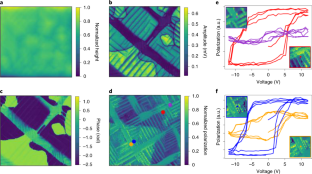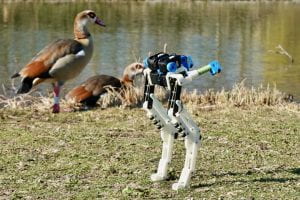2022-05-09 オークリッジ国立研究所(ORNL)
ORNLの計算科学工学部門とCNMSのMaxim Ziatdinov氏は、「非常に多くの潜在的な材料があり、そのいくつかは、従来のツールでは全く研究できず、設計と合成のためのより効率的で体系的なアプローチを必要としています。我々は、未踏の材料にアクセスするだけでなく、これまで不可能であった発見への共有可能で再現可能な道を作るためにスマートオートメーションを使用することができます。」と述べている。
Nature Machine Intelligence誌に掲載されたこのアプローチは、物理学と機械学習を組み合わせて、ナノスケールでの材料の機能特性を研究するために設計された顕微鏡実験を自動化するものです。
<関連情報>
- https://www.ornl.gov/news/self-driving-microscopes-discover-shortcuts-new-materials
- https://www.nature.com/articles/s42256-022-00460-0
アクティブラーニングによる強誘電体材料の構造-物性相関の実験的発見 Experimental discovery of structure–property relationships in ferroelectric materials via active learning
Yongtao Liu,Kyle P. Kelley,Rama K. Vasudevan,Hiroshi Funakubo,Maxim A. Ziatdinov & Sergei V. Kalinin
Nature Machine Intelligence Published: 04 April 2022
DOI:https://doi.org/10.1038/s42256-022-00460-0

Abstract
Emergent functionalities of structural and topological defects in ferroelectric materials underpin an extremely broad spectrum of applications ranging from domain wall electronics to high dielectric and electromechanical responses. Many of these functionalities have been discovered and quantified via local scanning probe microscopy methods. However, the search has until now been based on either trial and error, or using auxiliary information such as the topography or domain wall structure to identify potential objects of interest on the basis of the intuition of operator or pre-existing hypotheses, with subsequent manual exploration. Here we report the development and implementation of a machine learning framework that actively discovers relationships between local domain structure and polarization-switching characteristics in ferroelectric materials encoded in the hysteresis loop. The hysteresis loops and their scalar descriptors such as nucleation bias, coercive bias and the hysteresis loop area (or more complex functionals of hysteresis loop shape) and corresponding uncertainties are used to guide the discovery of these relationships via automated piezoresponse force microscopy and spectroscopy experiments. As such, this approach combines the power of machine learning methods to learn the correlative relationships between high-dimensional data, as well as human-based physics insights encoded into the acquisition function. For ferroelectric materials, this automated workflow demonstrates that the discovery path and sampling points of on- and off-field hysteresis loops are largely different, indicating that on- and off-field hysteresis loops are dominated by different mechanisms. The proposed approach is universal and can be applied to a broad range of modern imaging and spectroscopy methods ranging from other scanning probe microscopy modalities to electron microscopy and chemical imaging.



